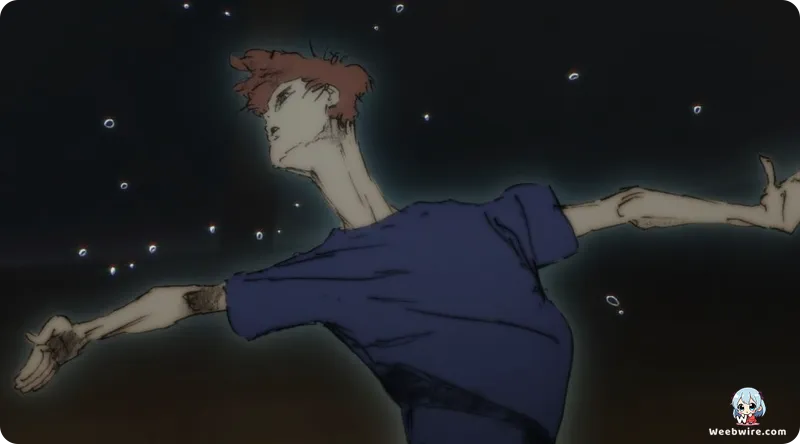Unveiling the Hidden Depths: How 'Welcome to the Ballroom' Revolutionized Sports Anime with Artistry and Authenticity

Step onto the dance floor and discover the fascinating secrets behind Welcome to the Ballroom, the acclaimed anime adaptation of Tomo Takeuchi's manga that redefined the competitive ballroom dancing genre. Far from a superficial spectacle, this series captivated audiences not just with its intense rivalries and heartwarming character arcs, but through a meticulously crafted blend of animation, character design, and an unwavering commitment to authenticity. Let us delve deeper into the deliberate artistic choices and production mastery that elevate this anime far beyond a typical sports narrative.
The Distinctive Artistry: Elongated Necks and Posture
One of the most striking visual elements, and a frequent topic of discussion among fans, is the characters' distinctly elongated necks. This was not a whimsical artistic flourish but a profound decision by manga artist Tomo Takeuchi, faithfully and even emphatically translated by animation powerhouse Production I.G. In the rigorous world of ballroom dance, impeccable posture is paramount. Dancers constantly strive for an elegant, extended line, their heads held high, conveying grace and poise. By exaggerating this feature, the animators brilliantly communicate the ideal dancer's physique and the relentless effort required to maintain perfect form. This bold choice, while initially surprising, profoundly enhances the visual narrative, making movements feel more expansive and underscoring the characters' deep dedication to their craft. It is a testament to how every visual detail contributes to the overall impression in a sport where presentation is key.

Production I.G's Mastery of Motion
Production I.G, celebrated for its stellar work on sports anime titans like Haikyuu!! and Kuroko's Basketball, brought its unparalleled expertise to Welcome to the Ballroom. Their renowned ability to depict dynamic action and fluid motion proved an ideal match for the intricate choreography of ballroom dancing. The studio painstakingly animated not just static poses, but the nuanced physics of movement, the graceful flow of costumes, and the raw, intense expressions of dancers mid-performance. This extraordinary attention to detail shines through every spin, dip, and rise, imbuing the dance sequences with a level of realism and emotional resonance rarely seen. Employing techniques like rotoscoping and collaborating closely with professional dancers, they ensured movement authenticity, even within the stylized animation, making each dance battle an exhilarating visual feast.
Tatara Fujita's Unique Character Arc
Protagonist Tatara Fujita’s journey also defies typical shonen tropes. Initially awkward and aimless, his relatability stems from his unique development. A lesser-known insight reveals that Tatara’s inherent observational skills, initially perceived as shyness, evolve into his greatest asset. He keenly studies other dancers, internalizing their techniques and emotional expressions, enabling him to learn and adapt at an astonishing pace. This subtle character trait powerfully illustrates that talent extends beyond inherent physical prowess; it encompasses dedication, continuous learning, and a deep understanding of an art form. His path highlights the often-overlooked intellectual and emotional dimensions of competitive dancing, where understanding one's partner and rivals is as crucial as physical execution.
The Unsung Hero: The Soundtrack
The soundtrack of Welcome to the Ballroom is another unsung hero, playing a pivotal yet often underestimated role in the anime’s success. Unlike many sports anime relying on high-octane rock or pop for action sequences, Welcome to the Ballroom masterfully navigates the diverse and specific musical demands of ballroom dancing. The series features a rich tapestry of pieces that perfectly capture the essence of various dance styles, from the fiery tango to the elegant waltz and the vibrant quickstep. The musical composition not only establishes the mood for each dance but meticulously dictates the rhythm and emotional arc of the characters’ movements. This dedication to musical authenticity immerses viewers directly onto the dance floor, allowing them to feel the energy and intensity of every performance.
Psychological Depths and Interpersonal Dynamics
Beyond the physical prowess, the series delves into profound psychological depths. It explores the intricate dynamics between partners, the immense pressure of competition, and the personal insecurities that dancers confront. Every character, from the enigmatic Kiyoharu Hyodo to the fiercely determined Shizuku Hanaoka and the effervescent Chinatsu Hiyama, grapples with distinct challenges and motivations. The anime unflinchingly portrays the emotional toll of competitive dancing, including moments of frustration, jealousy, and self-doubt. This focus on the mental and emotional landscapes of its characters adds a layer of sophisticated storytelling, transforming the dance floor into a stage for profound personal growth and complex interpersonal relationships. The series compellingly reminds us that true partnership in dance, much like in life, necessitates trust, communication, and a shared commitment to overcoming obstacles. The meticulous execution of these elements solidifies Welcome to the Ballroom as a series that gracefully waltzes between intense sports action and compelling human drama, leaving an indelible mark on its audience.
Credits
Welcome to the Ballroom
Author
Tomo Takeuchi
Cover Art
Tomo Takeuchi
Studio
Production I.G
Publisher
Kodansha
Producers





